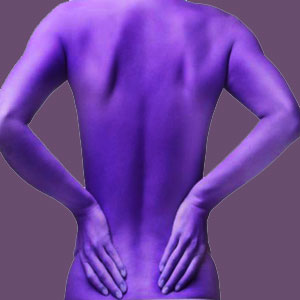
Massage for piriformis pain is an effective treatment option that can relax away pain and even help to facilitate organic healing for some diagnoses. Massage is the world’s oldest and most widely used form of healthcare, having been used since the very dawn of our species on this planet. People immediately recognized the healing power of therapeutic touch millennia ago and have refined the art and science of massage into a legitimate form of treatment ever since.
Massage comes in many forms and can be performed by a variety of caregivers. Although we traditionally think of massage as being offered by massage therapists, other types of care providers might also offer massage techniques as part of their combined care approach to piriformis pain. Chiropractors, Doctors of Traditional Chinese Medicine and physical therapists are all professionals who embrace massage as a valuable addition to a pain management program. However, amateur and even self-massage can be just as effectual for some patients, as well as saving them lots of money and making the therapy more accessible.
This patient guide explores the use of massage for various piriformis pain conditions. We will provide guidance for patients who are interested in using massage, but are not sure where to go or how to begin.
Massage for Piriformis Indications
Massage is indicated for all piriformis diagnoses, including injury, RSI, muscle imbalances and of course, piriformis syndrome. However, the objectives of the massage will vary slightly depending on the specific nature of the diagnosis and the reason why pain is present. Typically, massage will seek to relax overly tense and painful tissues, as well as facilitate flexibility and movement in the region. Massage will also always help increase circulation to the area, helping to metabolize waste chemicals at cellular level and oxygenating the tissues, thereby effectively decreasing ischemia-related pain.
Massage for injury and RSI is meant to speed organic healing, by facilitating good health in the affected tissues. Massage can assist in relieving muscular imbalances by working the tension out of overly taut structures and providing improved blood flow to structures that need to overcome laxity. For piriformis syndrome, massage can help to decrease tightness in the muscle, as well as reduce spasming or cramping of the muscle that is responsible for constricting the sciatica or pudendal nerves.
Massage Efficacy
Massage is a very effective form of treatment for most piriformis diagnoses and is best applied in combination with other types of constructive conservative care, such as heat, ice, exercises and stretches. Massage is a perfect complement to exercise therapy and is highly recommend for all patients in physical therapy or in self-managed fitness programs geared towards decreasing symptomatic piriformis activity.
Massage is an efficacy multiplier when used in combination with similar treatments. These therapies work well together and create more benefits when used in combination then the sum of them would provide if used alone. It is best to seek out the guidance of a physical therapist or sports medicine physician to coordinate the best uses for massage in your current therapy program.
Massage should not be overly painful and if it is, make sure to complain. The idea of “no pain, no gain” is not ideal for most patients with piriformis diagnoses. A good massage should be therapeutic without being torturous. If the pain is severe during a massage, request that the therapist goes easier or simply find a new care provider. Just note that some sensitivity or minor discomfort is common, especially when the area is first treated.
Massage for Piriformis Options
Massage comes in so many forms and patients have more options now than ever before in terms of service availability. Some of the most common general massage techniques include Swedish, Shiatsu and Thai. Specific forms of focused massage that are well known to be used for piriformis syndrome include trigger point work, myofascial release and Rolfing. It is best to consult with several therapists in order to get a good idea of what each style offers. It is also better not to commit to any multiple session program before trying an initial treatment to ensure compatibility of style and therapist with your specific needs.
If you can get a loved one to provide a massage, you can save some money and still enjoy satisfying results. However, there are some warnings that apply in these cases: First, it is best to get several professional massages first in order to know what needs to be done and what areas require work. If your loved one can attend your massages with you, it is even better. There are some good massage tutorials available online also.
You can also provide a self-massage that is available anytime. The piriformis region is easily accessible with your own hands and can be massaged using a variety of techniques. Once again, the same cautions apply, since you should have a good base of knowledge to work with before attempting self-massage, but certainly do not need to be an expert to achieve positive results with a bit of practice.
Piriformis Pain > Piriformis Treatment > Massage for Piriformis





